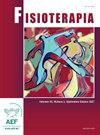儿科物理治疗在预防和治疗位置性贪食症方面的有效性:系统综述
Q4 Health Professions
引用次数: 0
摘要
位置性斜头畸形是婴儿颅骨扁平和不对称的畸形,由头部某一区域持续的外部压力引起。预防和治疗对于避免婴儿发育问题很重要。本系统综述旨在分析和评价目前关于预防和非手术方法治疗体位性斜头畸形的证据。材料与方法系统检索Scopus、Web of Science和ScienceDirect。ROBINS-I工具用于评估非随机研究的偏倚风险,RoB工具用于评估随机研究的偏倚风险。结果共纳入10篇文献。其中8例为治疗目的,2例为预防目的。最常见的干预包括父母教育与手工治疗技术或矫形元素的结合。6篇分析文章偏倚风险较高。在任何一篇文章中都没有发现不良反应。结论手工治疗干预,如肌筋膜和手法技术,父母教育和使用颅骨矫形器,是有效和安全的治疗和预防阵位性斜头畸形。它们的使用可能有助于减少这种情况在世界范围内的发病率。本文章由计算机程序翻译,如有差异,请以英文原文为准。
Eficacia de la fisioterapia pediátrica en la prevención y tratamiento de la plagiocefalia posicional: una revisión sistemática
Introduction
Positional plagiocephaly is a flattened and asymmetrical deformity of the skull in infants, caused by constant external pressure on one area of the head. Prevention and treatment are important to avoid developmental problems in the infant. This systematic review aimed to analyze and evaluate the current evidence regarding the prevention and non-surgical approaches to positional plagiocephaly.
Material and methods
Systematic searches were conducted in Scopus, Web of Science, and ScienceDirect. The ROBINS-I tool was used to assess the risk of bias in non-randomized studies, while the RoB tool was used to evaluate the risk of bias in randomized studies.
Results
A total of 10 articles were included. Of these, 8 had a therapeutic objective, and 2 were preventive. The most common intervention involved a combination of parental education with manual therapy techniques or orthopedic elements. The risk of bias in 6 of the analyzed articles was high. No adverse effects were identified in any of the articles.
Conclusions
Manual therapy interventions, such as myofascial and manipulative techniques, parental education, and the use of cranial orthoses, are effective and safe for treating and preventing positional plagiocephaly. Their use may help reduce the incidence of this condition worldwide.
求助全文
通过发布文献求助,成功后即可免费获取论文全文。
去求助
来源期刊

Fisioterapia
Health Professions-Physical Therapy, Sports Therapy and Rehabilitation
CiteScore
0.50
自引率
0.00%
发文量
37
期刊介绍:
Publicación Oficial de la Sociedad Española de Fisioterapeutas. Sus páginas ofrecen desde artículos originales hasta revisiones, pasando por el estudio de casos o los actos más importantes relacionados con la especialidad.
 求助内容:
求助内容: 应助结果提醒方式:
应助结果提醒方式:


